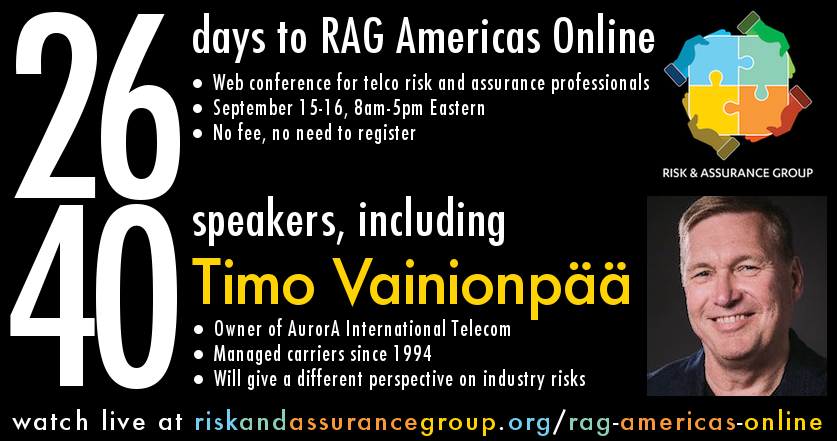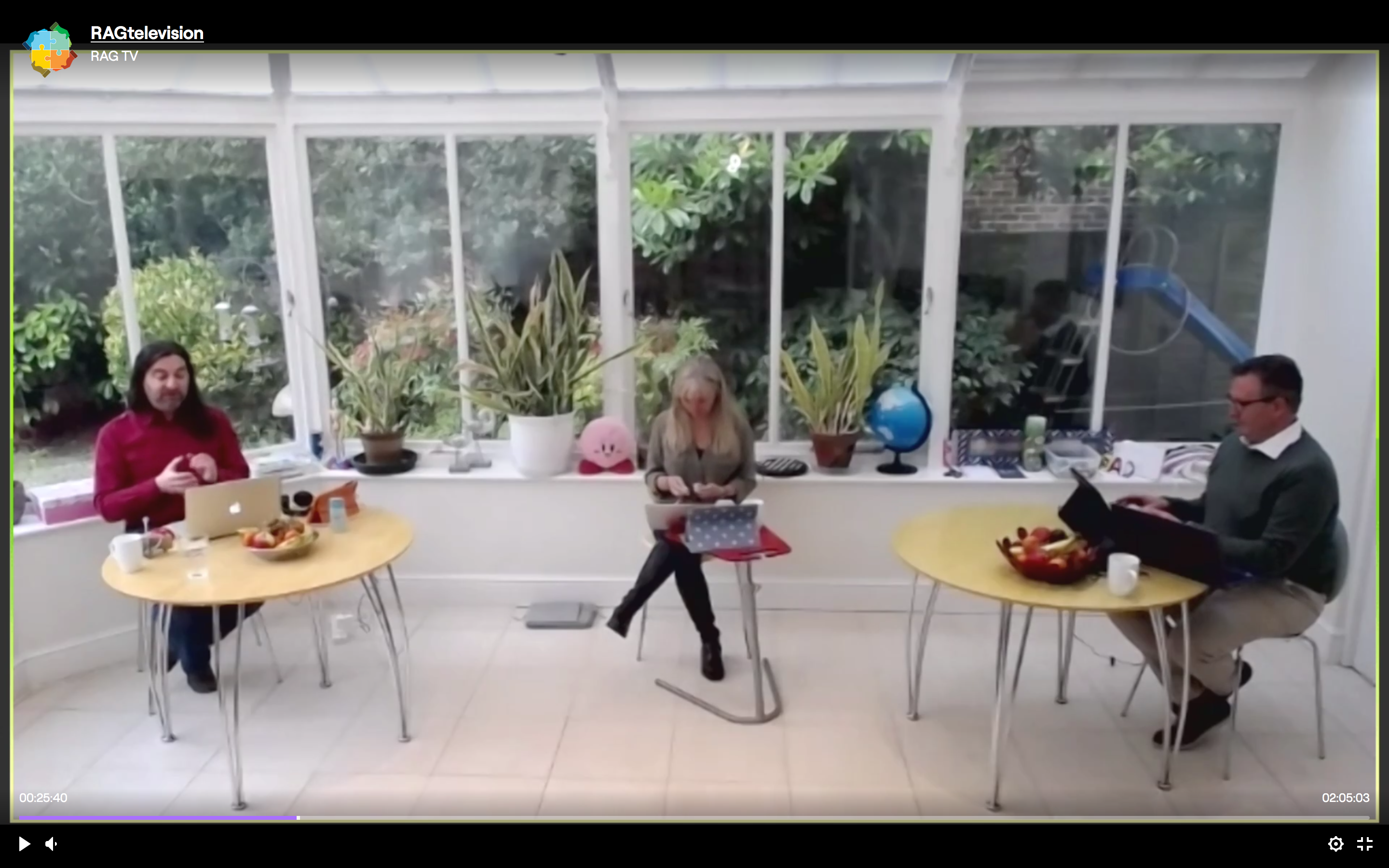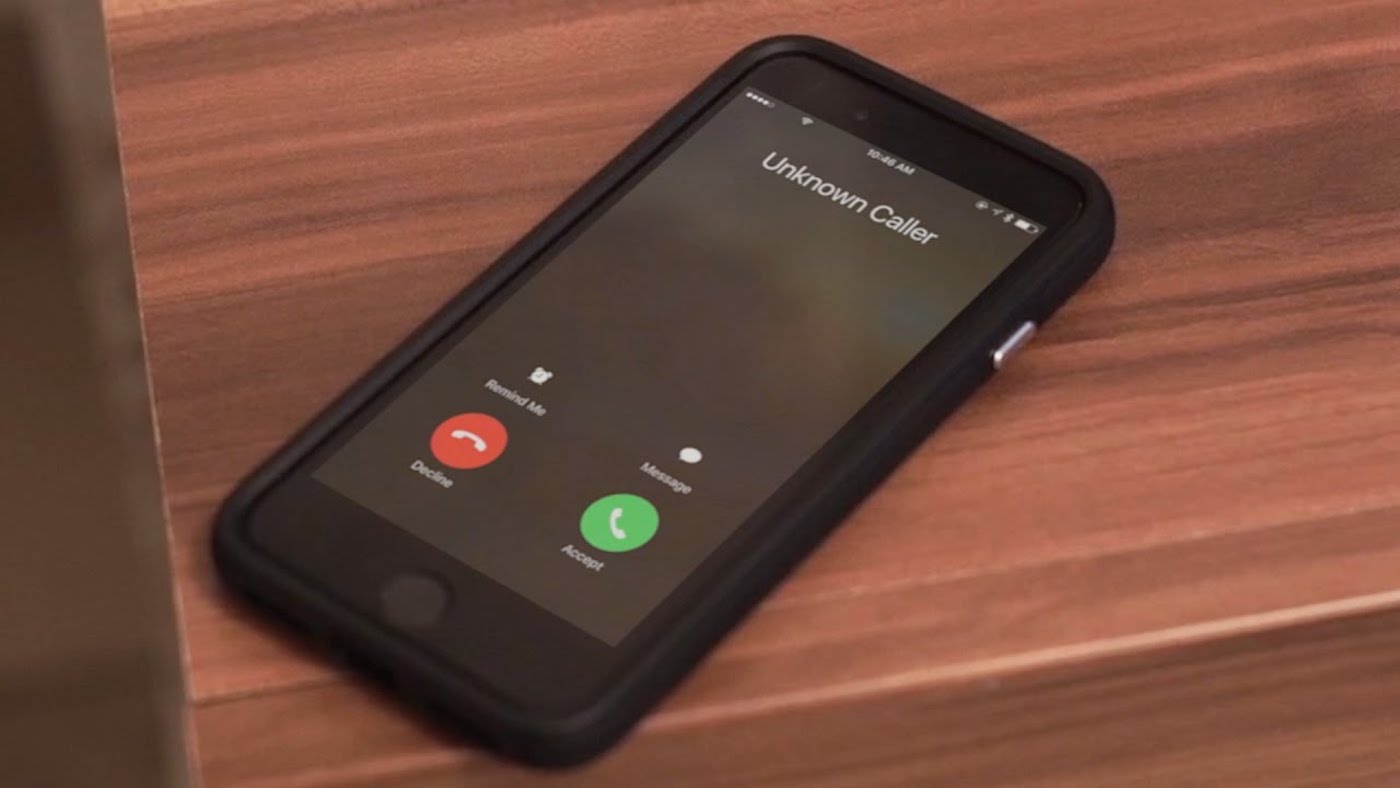Category: International
-

RAG Americas Online: Sep 15-16
Coronavirus may have prevented RAG’s North American conference from being held at the offices of CenturyLink in Denver CO, but it will not stop us from running the biggest conference for telecoms risk professionals. Over 2,000 people from 93 countries watched RAG London Online in May (see my posts here and here) and we intend…
-

RAG London Online: May 13-14, 2020
Today was the first day of the Risk and Assurance Group (RAG) London conference. Due to the ongoing global pandemic it was turned into a virtual online conference. The sessions began at 7:30 AM London time (2:30 AM in Waterloo, eek !) but I listened to the whole event from start to finish. The conference…
-

2020 Redux
Back in early January, I wrote a post on my 2020 vision where I focused on a few topics I thought would be of importance in the New Year. My goal was to avoid the dreaded Top 10 list of predictions by providing more substance. Back then we were all quite innocent and unprepared to…
-

Calling Line ID
A premium, high quality international carrier endeavours to always pass true calling line ID. The importance of this cannot be understated in this era of increased telecom fraud. Voice calls have always attracted hackers, cheats, hoaxers and swindlers. Telephony frauds can range from the use of grey routes and CLID manipulation to Wangiri (one ring)…
-

Origin Based Pricing
Wholesale telecom used to be simple. There was one rate per minute to call a country overseas from Canada. Then deregulation and liberalization came in the late 1990’s and early 2000’s and competition came to international telecom. We saw rates broken out for large cities within countries; then cellular came and we had breakouts for…
-

Networking Pendulum
One of the benefits of age is perspective. You notice that many of the “new” ideas are simply old ones that have come back into vogue, like the swing of the pendulum. The aptness of the metaphor is clear, as history demonstrates a tendency for human events to swing back and forth from one extreme…